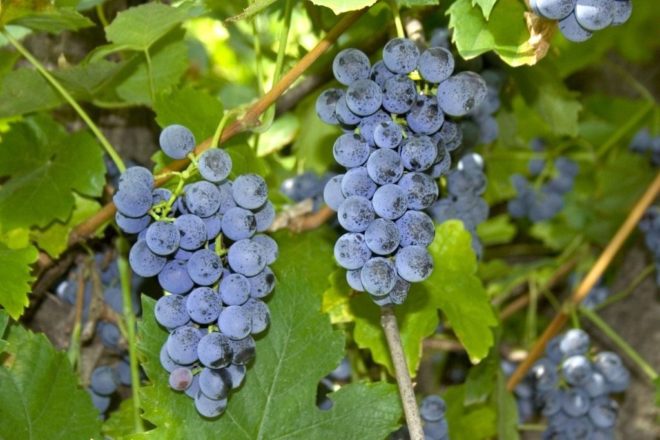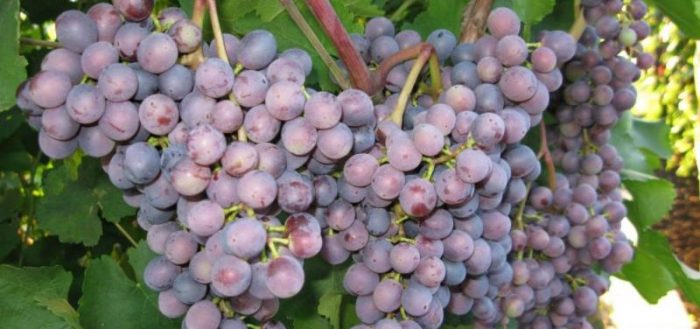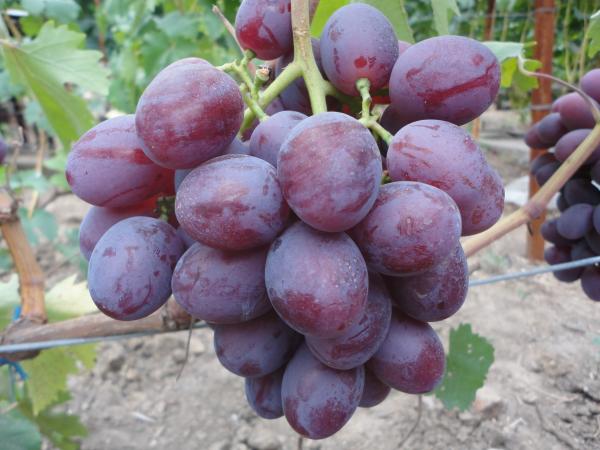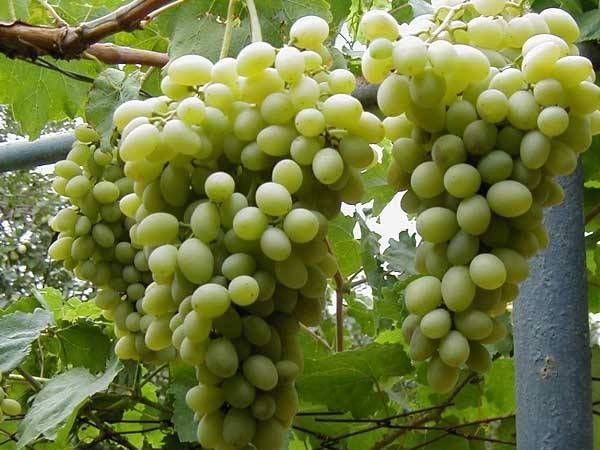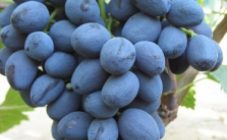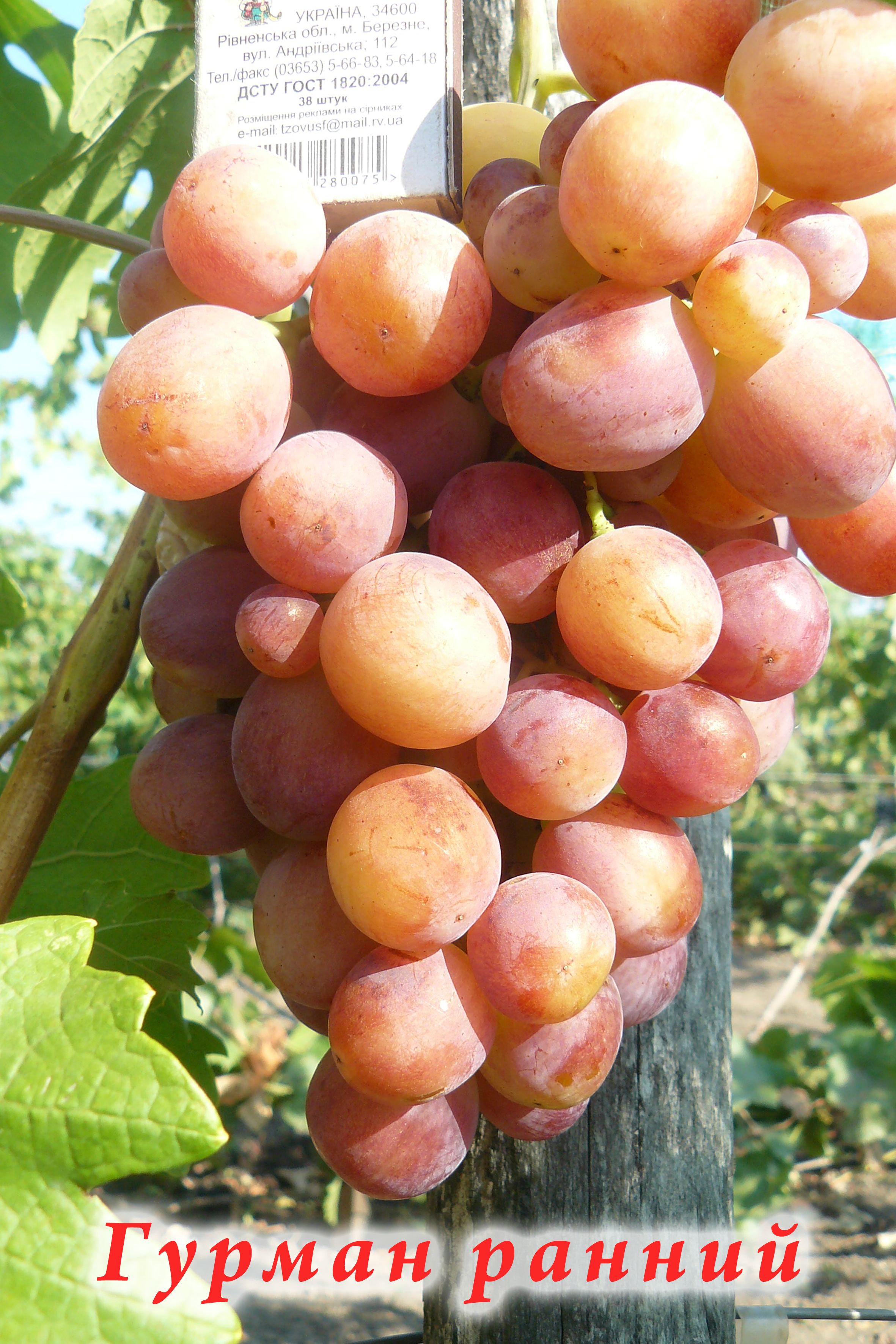Content:
The early purple grape was bred in the last century, but in our time it is very popular due to many of its characteristics. Comparing it with other early species, they note its resistance to disease and cold. The latter fact allowed the cultivation of this variety in different regions of the country, even in unfavorable climatic conditions for it, perhaps that is why it is often called the Russian lilac, hinting at a not particularly favorable climate for such a thermophilic culture in most of our country.
Characteristics and features of the variety
The Violet early grape variety is classified as a table-wine type. It is appreciated for its original taste with a distinct nutmeg flavor. Has a high sugar content. In this he can compete with such species as Gabena Nou, Sapevari and Livia. It is added in the manufacture of red table and dessert wines. One of the brightest representatives is Steppe Rose wine. Good as a dessert when eaten fresh, great for the production of juices and liqueurs.
It ripens in mid-August and is harvested in early September.
Plant parameters
Varietal early Violet (Russian lilac) differs in parameters:
- The bush is slightly above average in size.
- Grape clusters of medium size, weighing about 150 grams. They are conical in shape, loose in structure, berries are freely arranged in bunches.
- The leaves are light green in color, medium in size and round in shape. The structure is smooth with a rare manifestation of blistering, the edges are sometimes bent downwards.
- Flowers are hermaphrodites.
- The age of the shoots can be distinguished by their color. The very young have a light green color, one-year-olds are pale brown, and the mature vine is powerful, brown.
- The berries are medium-sized, round in shape. Dark blue with a lilac tint, with a slight grayish bloom. The stem of the brush is light green. The peel on the berries is quite dense, has an average thickness. The fruits are juicy and sweet. Contain 2-3 seeds inside.
Indicators of resistance to various kinds of influences on the plant are highly valued by winegrowers:
- characterized by good frost resistance, able to withstand temperatures of minus 27 ℃;
- withstands the invasion of various diseases with dignity, including phylloxera, leafworm, powdery mildew;
- grows on different soil types, even on heavy salt marshes.
Specifications:
- sugar content - 20 g / 0.1 l;
- acidity - 3.8 g / l;
- maturation level - 78%.
Planting and leaving
The most favorable time for planting is the period from May to October. When disembarking, weather conditions, soil type and geographic location must be taken into account. The further development of the bush depends on these nuances.
A complex of fertilizers and wood ash are added to the prepared recess. The day before planting the bush, the hole should be poured abundantly with water (10 liters). The seedling is poured with water 2 hours before planting, so that it is more convenient to remove it from the container. After the shoot is placed in the hole, its roots are covered with soil and compacted around. Then the plant hides to a height of 10 cm. The young shoot is still quite weak, so it is tied to a support.
This, with a violet tint, the variety, like most other varietal species, loves the sunny side. It is better to arrange the planting individually, at some distance from tall trees and buildings. If all the conditions are met, good fruits can be obtained in three years.
Care conditions
Lilac grape variety - it requires thorough care. Only in this case he will thank him with a high yield and excellent condition of the bushes.
Due to its resistance to adverse weather conditions, it does not need abundant watering. The degree of watering is moderate, it increases only in hot and dry periods.
You need to start looking after shoots from the first months. The formation of the future bush is carried out by timely pinching, fragments and removal of old leaves.
Pest control is carried out twice a year. Spraying for each type of parasite is carried out at intervals of one week, no less.
You can propagate by layering or by cuttings. Many viticulture uses the grafting method.
Growing problems
Despite all the advantages and a high degree of resistance to climatic features and diseases, there are nuances in the growing process:
- Saplings and young bushes cannot stand very dry weather. In hot weather, a very low degree of rooting is observed.
- The vineyard is located only on the south or west side. In no case are they allowed to land in a northern direction.
- It is necessary to strictly monitor the deepening of the shoots into the soil. Insufficient root depth will lead to freezing in winter and drying out in the heat.
- When the leaves dry, it is not necessary to increase the watering of the bushes. The primary task is to establish the cause of the disease. A possible cause could be a micronutrient deficiency or a consequence of a disease. The deficit can be replenished by spraying the plants with an ash solution.
Lack of moisture is not the cause of grape disease. This is especially true for mature bushes. Their roots can go without water for quite a long time.
Advantages and benefits
The main advantages of the variety are:
- excellent taste;
- early August ripening;
- excellent resistance to frost, in some areas the bushes can not be wrapped up for the winter;
- high productivity;
- replenishment of shoots at the expense of replacing or dormant buds;
- unpretentiousness of the variety to climatic features;
- high pectin content.
Having decided on the decision to plant Purple grapes on the site, the grower will receive an invaluable treasure - a wonderful source of vitamins and the possibility of a wide variety of harvests. Especially if the user is an inveterate winemaker. Proper care will be a worthy guarantee of a large harvest.
